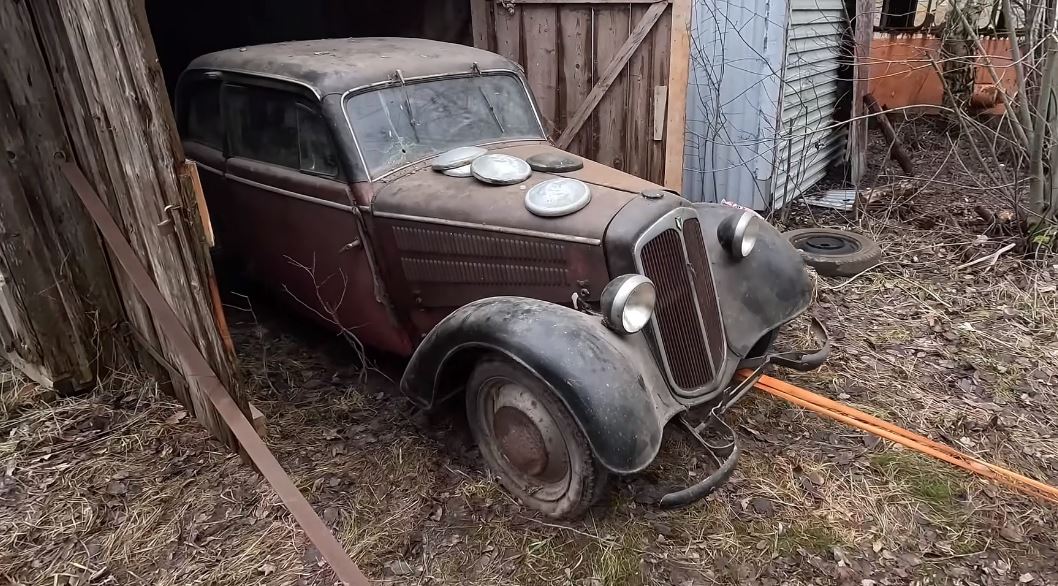When it comes to barn- and junkyard-found classic cars, we usually discuss vehicles with iconic nameplates. The reason is very simple: a 1969 Ford Mustang is more likely to be rescued than a 1960 Dodge Matador. What’s a Dodge Matador, you ask? Exactly!
But sometimes, we need to discuss lesser nameplates and brands as well—or at least that’s something I enjoy doing. Granted, not all classic automobiles deserve to be in the spotlight, but many earn it by enduring decades of full exposure to the elements like champs. The 1939 DKW you see here is one of those rigs.
If you’re unfamiliar with the DKW, it was founded in Zschopau, Germany, in 1916. Established by Danish engineer Jorgen Skafte Rasmussen, DKW initially produced a steam-powered car and a motorcycle equipped with a two-stroke engine. By the late 1920s, DKW had become the world’s largest motorcycle manufacturer. Automobile production commenced in 1928.
In 1932, DKW merged with Audi, Horch, and Wanderer to form Auto Union. Although DKW is pretty much unknown regarding automobile manufacturing, the German company was the first European brand to build high-volume front-wheel drive production cars. All featured transversely mounted two-cylinder two-stroke engines. This series included models F1 to F8 (about 218,000 sold from 1931 to 1942).
DKW restarted production after WW2 in 1949 with the Schnellaster van. Post-war vehicles include the limited-edition Monza sports car, the Munga off-road vehicle, and the Junior. By this time, DKW had switched to three-cylinder engines. Finally, DKW introduced the F102 sedan in 1963, three years before the brand was retired.
Purchased by Daimler-Benz in 1957, Auto Union became part of the Volkswagen Group in 1964. The latter updated the F102 with an inline-four engine and sold it as the Audi F103 starting in 1965. The F103 was the predecessor to the more iconic Audi 80 B1.
The car you see here is part of that pre-WWI2 run of somewhat innovative front-wheel-drive automobiles. Since it was built for the 1939 model year, it’s safe to assume it’s an F8. Launched in 1939, it remained in production through 1942. DKW produced both coupe and cabriolet models, all powered by 589cc and 692cc two-cylinder engines rated at 18 and 20 horsepower.
DKW sold about 50,000 units before production ended due to WW2. Although we can’t call the F8 rare based on production figures, these DKWs have a low survival rate, so they’re actually hard to find nowadays. This two-door saloon surfaced in Sweden, and the story goes that it sat for about 60 years in a junkyard in Skane County. But it seems it was actually stored in a barn on the premises, so it got some protection from the elements.
The F8 is obviously in rough condition, showing weathered paint and some rust spots. But it’s still in one piece and appears to be surprisingly complete for a vehicle that’s been neglected for decades. I’m almost finding it had to believe this DKW spent all that time outside.
And there’s more good news to report. This old rig didn’t come out of the barn to be scrapped or parted out. Our host did a full revival of the drivetrain and got the two-stroke powerplant running again. And as it turns out, the DKW is solid enough to drive, too. There’s cleaning footage at the 15:30-minute mark and in-car driving toward the end of the video. Hit the play button below to check it out.


